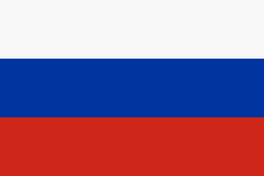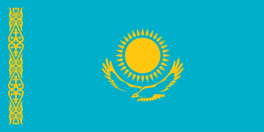Donate to Support Supercluster
Your support makes the Astronaut Database and Launch Tracker possible, and keeps all Supercluster content free.
SUPPORTSupercluster on Patreon
Your support makes the Astronaut Database and Launch Tracker possible, and keeps all Supercluster content free.
SUPPORTThis goes
to space
OneWeb
OneWeb Satellites
OneWeb's satellite constellation is designed to operate in low Earth orbit (LEO), at an altitude of approximately 1,200 kilometers (750 miles). This positioning allows the satellites to provide lower latency compared to traditional geostationary satellites, making the network more efficient for internet services. The constellation is expected to consist of around 648 operational satellites, with additional spares in orbit to ensure network reliability.
The first batch of six OneWeb satellites was launched in February 2019 aboard a Soyuz rocket from the Guiana Space Center. These initial satellites were used to test and validate the system’s performance. Following the acquisition by the UK government and Bharti Global, OneWeb resumed its launches and continued to build its constellation.
OneWeb's satellites are designed to communicate with each other through inter-satellite links, which helps maintain network connectivity even if a ground station is not immediately accessible. End users will connect to the OneWeb network via small user terminals, which can be installed in various locations, including homes, businesses, and mobile platforms like ships and airplanes.
OneWeb Company
OneWeb is a communications company founded in 2012 by Greg Wyler, with the aim of developing a constellation of low Earth orbit (LEO) satellites to provide global internet coverage, especially in underserved and remote areas. Originally called "WorldVu," the company was later rebranded as OneWeb. Wyler, leveraging his experience in satellite communications, envisioned creating a satellite network capable of delivering internet access to almost any location on Earth.
In 2015, OneWeb attracted substantial investments from major companies such as Qualcomm, Virgin Group, and Coca-Cola. These funds enabled OneWeb to move forward with its ambitious satellite development plans. The company partnered with Airbus to manufacture the satellites, with production set up in Toulouse, France. Additionally, OneWeb collaborated with launch providers like Arianespace to deploy its satellites into space.
Despite early progress, OneWeb faced financial challenges due to the high costs associated with satellite deployment. In March 2020, the company filed for Chapter 11 bankruptcy, leading to a temporary halt in its operations. However, in November 2020, the UK government and Bharti Global acquired OneWeb, allowing the company to exit bankruptcy and resume its satellite launches. By the end of 2021, OneWeb had successfully deployed over 350 satellites as part of its constellation.
Photo courtesy of OneWeb.
On this
rocket
Soyuz 2.1b/Fregat
Meet part of Roscosmos’s 21st century version of the Soyuz rocket.
One of the main upgrades included in the Soyuz 2.1b is a completely digital flight control system -- not a small task when the Soyuz rocket was first designed in the 1960s.
Stats
Height: 46.3 m (152 ft)
Diameter: 2.95 m (9 ft 8 in)
Mass: 312,000 kg (688,000 lb)
Stages: 2 or 3
This digital Flight Control System allows for greater precision and launch target accuracy.
The Soyuz 2.1b also sports an uprated Blok-I second stage engine, the RD-0124, which provides increased performance.
It was the second of three Soyuz 2 variants to fly, taking its first launch on December 27th, 2006.
The Soyuz 2.1b variant flies under two different national flags and has two different names for the same configuration.
When launching from Baikonur or Plesetsk, the rocket flies as part of the Russian Federal Space Agency, Roscosmos. For these missions, it is known as the Soyuz 2.1b.
When sold to Arianespace, the European Space Agency's launch management company, the rocket sports a few European modifications, like a European payload adapter and a European flight termination system.
When it flies for Europe, the rocket is known as the Soyuz ST-B.
Image: ESA
From this
spaceport
Site No. 31/6 - Baikonur Cosmodrome, Kazakhstan
Site 31/6 has been an active launch pad since January 14th, 1961. It has been used to launch R-7A, Vostok, Voskhod, Polyot, Molniya, and previous versions of Soyuz rockets.
It is currently used exclusively to launch the Soyuz 2 rockets.
A workhorse pad for satellite and robotic missions, it took up crew launch duties for Russian missions to the Station beginning in April 2020.
Baikonur Cosmodrome
Located in southern Kazakhstan, Baikonur was the world's first spaceport and the launch site for humanity's first orbital satellite, Sputnik, and Yuri Gagarin's first human spaceflight on April 12th, 1961.
Originally built as the Soviet Union's launch base, the collapse of the Union led to the Kazakh government leasing Baikonur to Russia until 2050.
The spaceport is operated both by Roscosmos, the federal space agency of the Russian Federation, and the Russian Aerospace Forces, a branch of the Russian Armed Forces.
Image courtesy of GK Launch Services / Roscosmos
Here's where to view OneWeb #12
Viewing Sites
GET THE SUPERCLUSTER APP
THE SUPERCLUSTER PODCAST
A podcast exploring the amazing milestones that changed space history, the wildest ideas that drive our future, and every development in this new Golden Age of Space.
Donate to support
Your support makes the Astronaut Database and Launch Tracker possible, and keeps all Supercluster content free.
SupportCOPYRIGHT 2021 SUPERCLUSTER LLC





